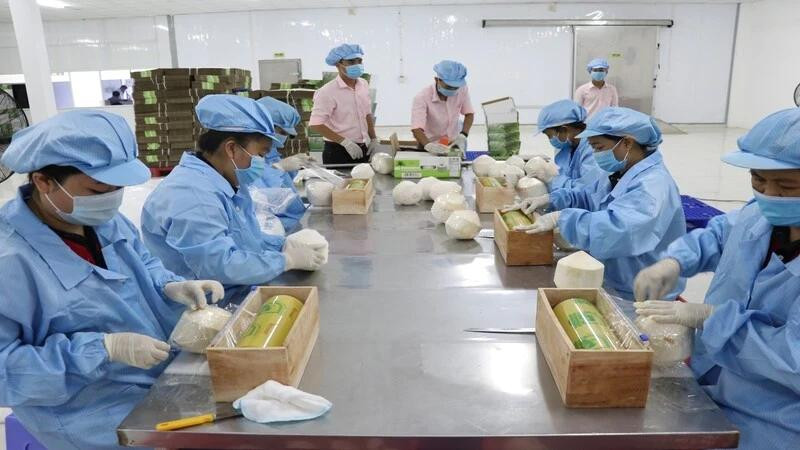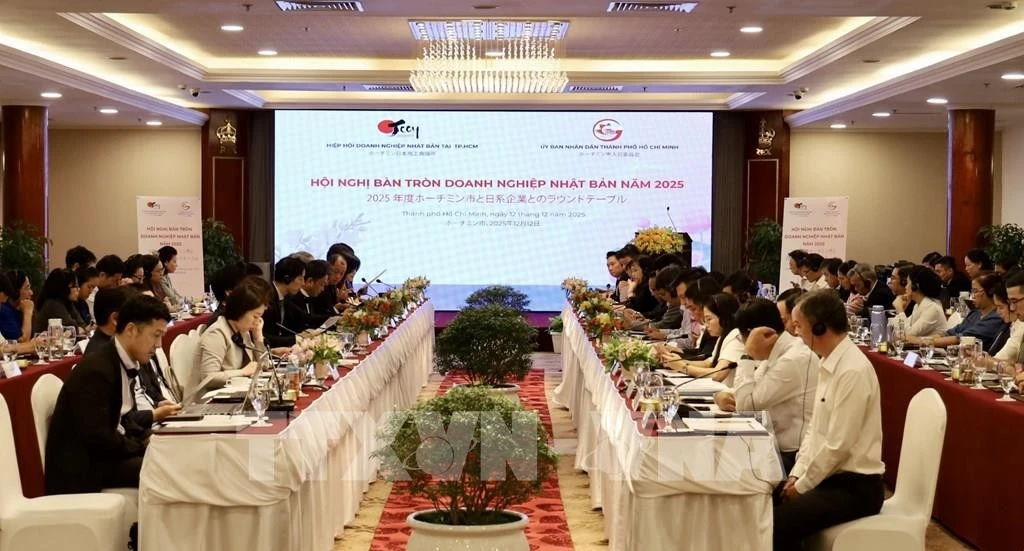Coconut is currently one of the six key industrial crops under the master plan for the development of key industrial crops by 2030. The plan sets the goal that more than 30% of coconut areas will be produced according to GAP and equivalent standards by 2030, while the area of coconut plantations with assigned codes for traceability will reach about 30%.
The open market
In mid-August 2024, the Ministry of Agriculture and Rural Development of Vietnam and the General Administration of Customs of China signed a protocol on plant quarantine requirements for fresh coconuts exported from Vietnam to China. This is a significant milestone, opening great opportunities for Vietnamese fresh coconuts to conquer the billion-person market. Statistics show that China consumes approximately 4 billion coconuts each year, about 2.6 billion of which are fresh coconuts.
While the demand is high, China's production capacity is still limited, creating an ample room for Vietnamese coconuts to penetrate this market deeply. In 2024, fresh coconut exports to China were expected to reach 250 million USD, accounting for 25% of the total export value of the entire coconut industry. Nguyen Phong Phu, Technical Director of Vina T&T Group, stated that China is a populous market with a high demand for coconut products, especially fresh coconuts, coconut water, coconut oil, and processed coconut products.
In terms of geographical location, Vietnam has many advantages thanks to its proximity to China, offering reduced transportation costs and time compared to other countries in Southeast Asia or Africa. The free trade agreements between ASEAN and China also create favourable conditions for reducing taxes and boosting trade. Vina T&T Group has exported large quantities of Vietnamese coconuts to markets such as the US, Australia, Canada, etc., and will focus more on the Chinese market in the coming time. The company currently has one packing facility registration code and three regional planting codes, ensuring the export of coconuts to China in large quantities.
In addition to the Chinese market, the US is also a major consumer of coconut products, with growing demand for processed products such as coconut water, coconut oil, and coconut flour. The US imported large quantities of coconuts year round to meet domestic consumption needs.
According to data from the International Trade Centre (ITC), in the first eight months of 2024, the US imported 44,910 tonnes of fresh coconuts, either with or without the husk, valued at 47.35 million USD, marking an 11.5% increase in volume and an 18.8% increase in value compared to the same period in 2023. In the first eight months of 2024, the US significantly increased its coconut imports from Vietnam, with Vietnam’s market share in the total US coconut import volume rising from 0.76% in the first eight months of 2023 to 8.59% in the same period of 2024.
Along with market opening, logistics play a crucial role in quickly bringing Vietnamese coconut products, especially fresh coconuts, to key markets. Dang Dinh Long, Chairman of the Board of Mega A Logistics, said: "In addition to transporting coconuts by road through border gates, sea transport is currently the most economically efficient method."
Recently, cold chain systems such as storage facilities and refrigerated containers for exports to the Chinese market have been improved and upgraded. At the same time, logistics companies have worked closely with the Ministry of Agriculture and Rural Development and the Ministry of Industry and Trade to reduce logistics costs, thus helping to enhance the competitiveness of coconut products. Accordingly, the logistics cost (per coconut) is only about 3,000 VND, while the plantation codes and packaging facilities are quickly inspected and cleared by the quarantine authorities of China’s General Administration of Customs in less than 12 hours.
Increasing competitiveness through quality
Currently, in addition to Vietnam, countries such as Thailand and Indonesia are also exporting large volumes of coconuts to China with competitive quality. This requires businesses to both improve their products and maintain reasonable prices. At the same time, they must diversify high-value-added coconut products such as coconut milk, coconut candy, and coconut-based cosmetics.
Huynh Quang Duc, Deputy Director of Ben Tre Provincial Department of Agriculture and Rural Development, said the province has the largest coconut plantation area in the country, covering over 80,000 hectares and accounting for 88% of the coconut area in the Mekong Delta and nearly 42% of the coconut area in Vietnam. The coconut tree has been identified as a key crop and a source of income for more than 200,000 rural households. To date, the province has 133 coconut farming regions with assigned codes covering 8,391 hectares, and 14 enterprises have been granted packaging facility codes to export fresh coconuts to the Chinese market.
Ben Tre has established an organic coconut material area of over 20,781 hectares, which is evenly distributed across the districts of Binh Dai, Giong Trom, Mo Cay Nam, Mo Cay Bac, Thanh Phu, and Ba Tri. The province has formed a value chain closely linked with eight major enterprises, which possess modern technologies for processing and exporting organic coconut products to various markets, including the US, EU Japan, China, Canada, and the Republic of Korea. Every year, coconut exports bring in more than 350 million USD for Ben Tre Province.
“The clear direction of competing through quality has led the province to consistently advise production, packaging, and export units to strictly adhere to food safety regulations, quality standards, and plant quarantine procedures as outlined in the protocols and related regulations. Compliance with these rules not only ensures exports to China but also enhances the quality of coconut products, opening opportunities to access other markets around the world,” emphasised Duc.
















